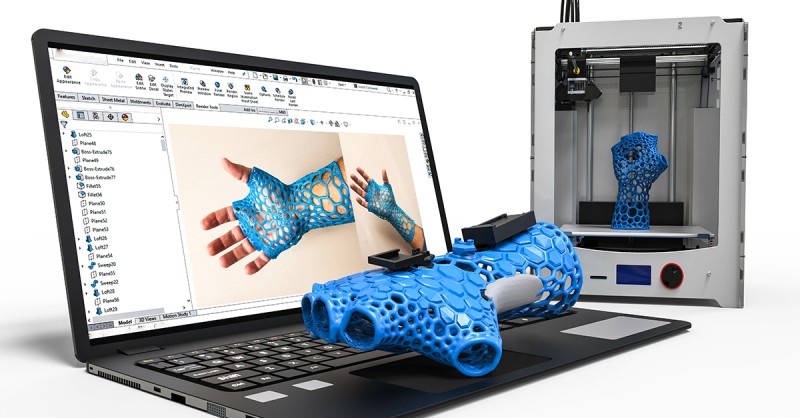About ten years ago, many leading analyst firms predicted that 3D printers would be standing in virtually every household by 2020. Now we know that these predictions have little to do with the reality around us, and 3D printing has remained an industrial technology. However, this does not mean that its development has stopped. On the contrary, according to a 3D Printing Market Size, Share & Trends Analysis Report, "The global 3D printing market size was valued at USD 13.78 billion in 2020 and is expected to expand at a compound annual growth rate (CAGR) of 21.0% from 2021 to 2028." Let's take a closer look at the most interesting 3D printing trends and applications of this technology in different sectors.
The most interesting 3D printing market trends
3D printing technology is becoming increasingly popular. It is therefore worth taking a look at the most interesting trends to better understand what the future of 3D printing is.
3D printing trends: Printed skin
For over 20 years, scientists have been working to develop technology that would help them grow human skin or tissue that could replace it. One of the primary applications of such skin would, of course, be transplants for victims of burns, accidents, people with badly healing wounds or dermatological problems. It turns out that 3D technology, which has made it possible to print human skin, comes to the rescue. Already, skin manufactured this way is revolutionising the cosmetics industry and reducing the amount of cosmetics tested on animals. This trend is expected to grow significantly in the coming years.
3D-printed houses
3D Printing applications have become a strong trend in the building industry, designing the „house of the future”. 3D printed houses are fully functional buildings, featuring electricity, water, telecommunications and air-conditioning systems. This could be one way to satisfy the ever-increasing demand for small, individual apartments and houses. A 3D printer for concrete prints walls and the entire house layer by layer in a 24/7 operation. All it needs is the support of a few construction workers. This reduces labor costs by 50 % to 80 % and construction waste by 30 % to 60 %. It is flexible, it can be easily modified or adjusted to customer needs and it only takes 20 % of the time of a building a comparable conventional house!
Repurposing plastic
It turns out that 3D printing also strongly supports the zero waste attitude. After all, its very idea is based on zero-waste production – whatever is made is made to measure, there is no waste and not even matrices are needed. But how sustainable are the materials used for 3D printing? Today it is possible to transform plastic waste into filament suitable for 3D printers, so a circular production can be established with the help of 3D printing.
4D Printing
It is worth explaining what 4D printing actually is, as its name can be somewhat misleading. This technology involves the use of materials for printing, which after printing and the application of an appropriate stimulus (e.g. temperature) can change shape. Currently, 4D printing is mainly used for visual purposes, but it is easy to imagine its future use, for example in medicine (transplantation), construction (to build pipelines), or robotics.
3D printing trends and the COVID-19 pandemic
3D printing has helped us in dealing with the pandemic. Thanks to 3D printers, we were able to meet the needs of hospitals and medical staff at critical moments. Among other things, the technology helped to speed up the production of face shields or complex ventilator components. In the UK and Israel, for example, protective masks were 3D printed. We all remember the situation when a hospital was built in Wuhan, China, in only 2 weeks with the help of 3D printed materials. Shortly afterward, fifteen isolation rooms for medical staff and people infected with COVID-19 were built in the city of Xianning.
Last but not least, the pandemic has made many companies realise how important it is to not depend on a complex and long supply chain. 3D printing is an obvious ally in this case.


